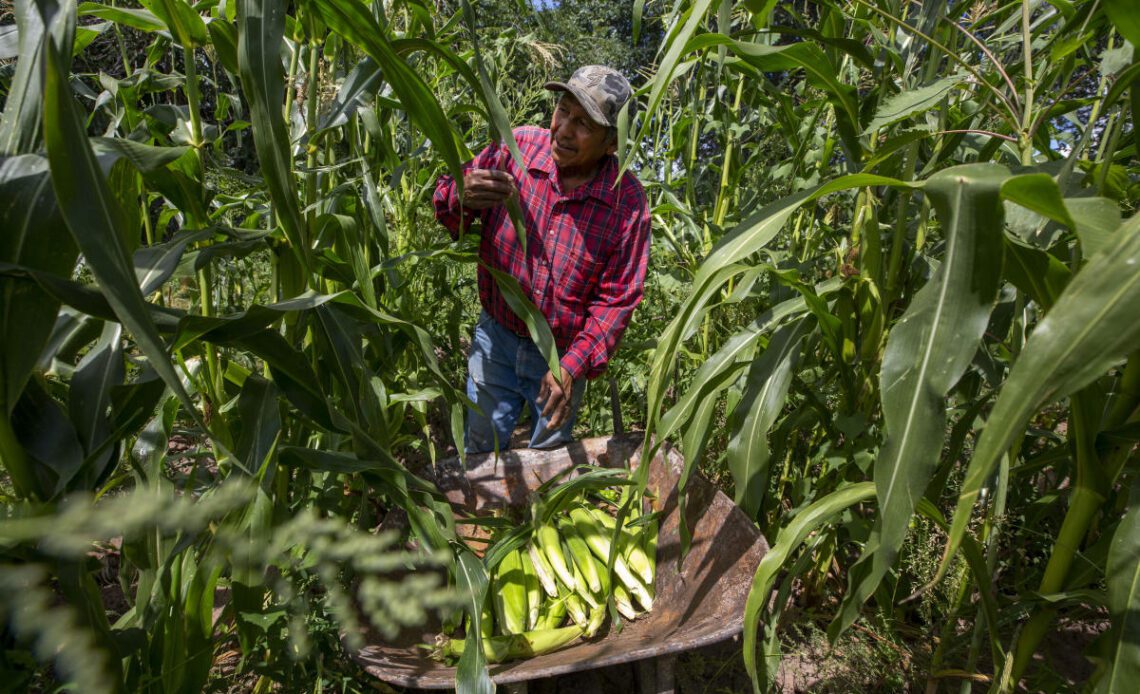SANTA CLARA PUEBLO, N.M. (AP) — Raymond Naranjo sings for rain, his voice rising and falling as he softly strikes his rawhide-covered drum.
The 99-year-old invites the cloud spirits, rain children, mist, thunder and lightning to join him at Santa Clara Pueblo, where Tewa people have lived for thousands of years on land they call Kha’p’o Owingeh, the Valley of the Wild Roses.
“Without water, you don’t live,” says Naranjo’s son Gilbert, explaining the rain dance song his father, a World War II veteran, has sung for decades — and with increasing urgency as the tribe fights for the survival of its ancestral home.
With unsettling speed, climate change has taken a toll on the the pueblo’s 89 square miles (230 square kilometers) that climb from the gently rolling Rio Grande Valley to Santa Clara Canyon in the rugged Jemez Mountains of northern New Mexico.
Hotter temperatures and drier conditions, exacerbated by global warming, have made their forests a tinderbox, shrunk waterways and parched pastures and gardens, threatening a way of life tied to land, water and animals they pray for daily and celebrate through stories, songs and dances passed down through the ages.
Elders in the tribe of about 1,350 remember dense forests of fir, pine, spruce and aspen. A creek cascading through a series of ponds in the canyon. A valley of sage and juniper with shady cottonwood galleries and gardens along a creek and river.
They hunted deer and elk, gathered firewood and medicinal and ceremonial plants and dug clay to make the shiny black and redware pottery pueblo artisans are renowned for. Fields irrigated by the creek and the Rio Grande bore a bounty of corn, beans, squash and chiles.
But three large wildfires in 13 years burned more than 80% of the tribe’s forested land. The last one, the 2011 Las Conchas fire — then the largest in New Mexico history — burned so hot it hardened the ground like concrete.
And in a cruel twist two months later, it took just a quarter-inch of rain to unleash the first of several devastating flash floods, scouring charred slopes and sending tree trunks, boulders and vast quantities of sediment surging through the pueblo. It buried sections of a Santa Clara Canyon road 50 feet (15 meters) deep, blew out earthen dams and drained ponds where the tribe planned to reintroduce native trout. It decimated habitat for beavers, bears, elk, mule deer and eagles.
In the valley, flash floods still fill irrigation ditches with…
Click Here to Read the Full Original Article at Yahoo News – Latest News & Headlines…

